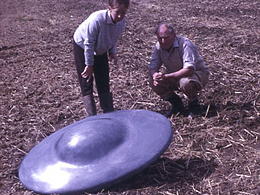September 6, 1994: The End of the World?
In his book
1994? (published in 1992), preacher Harold Camping predicted that there was a strong likelihood that the Second Coming of Christ would occur on September 6, 1994. When that didn't happen, Camping conceded he may have made a mathematical error in his calculations. Over the following years, he revised his prophecy multiple times until he finally arrived at the date of
May 21, 2011, which turned out to be wrong also. [
rationalwiki]





